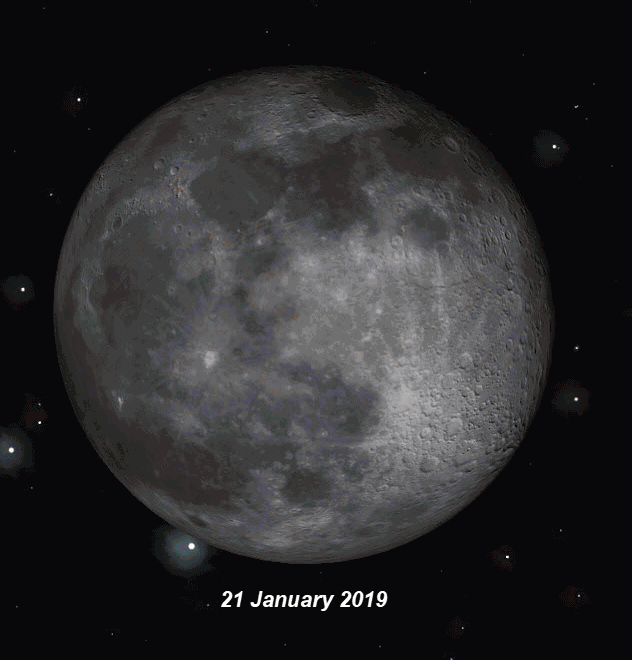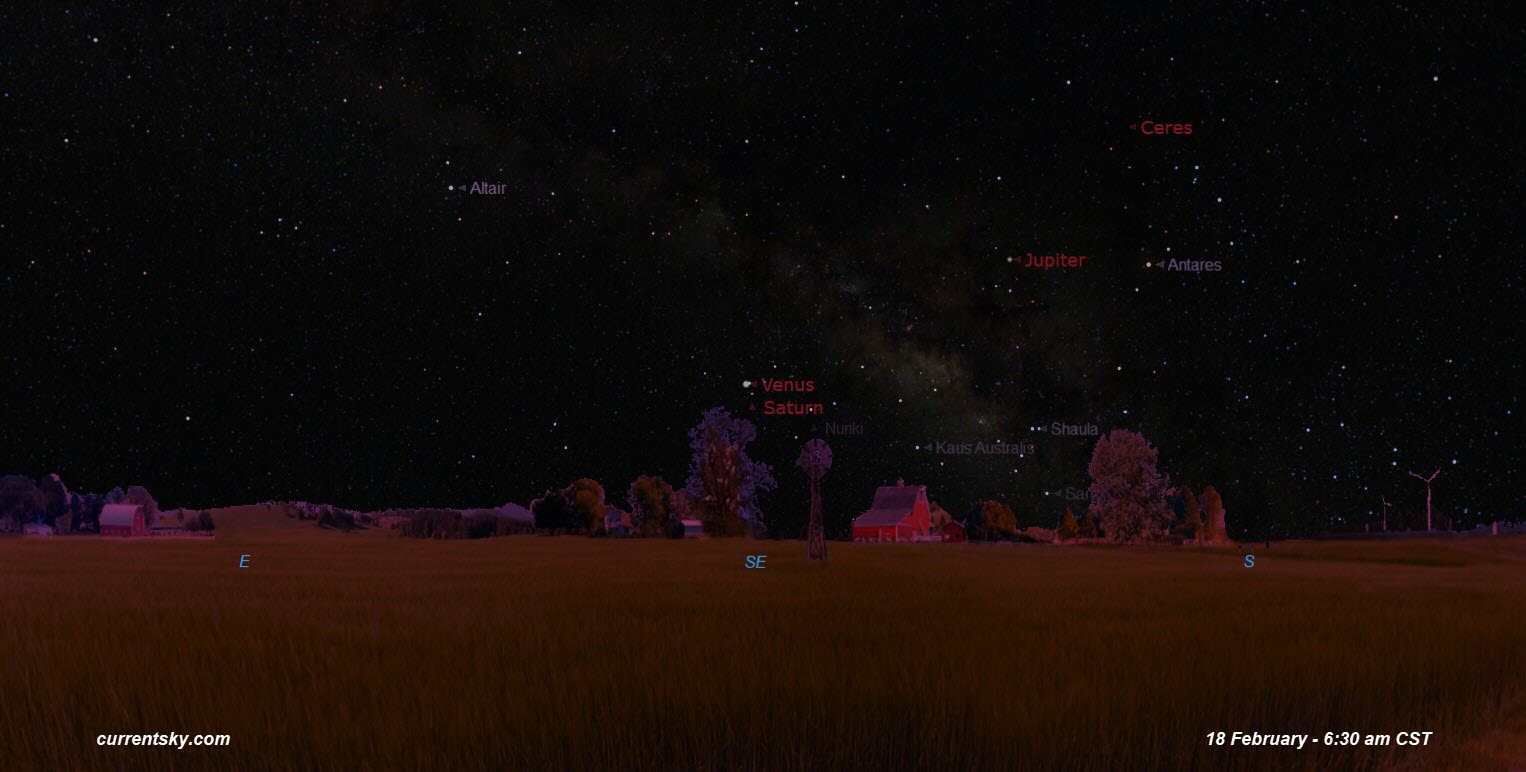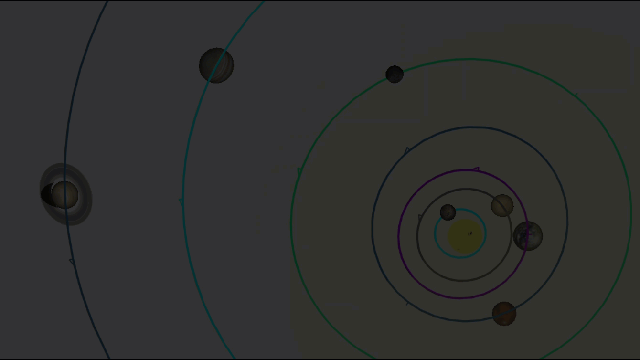February 2019
Click here for the month at a glance calendar.

The full Moon this month is the closest, and has the largest apparent diameter.
The full Moon of February is a 'Super-Moon'.
But seriously can you tell the difference?
Mercury Returns to the evening skies and eventually to its greatest eastern elongation of 18o at the end of the month.
Venus is visible but low over the eastern horizon at around sunrise.
Mars Is visible in the evening skies over the southwestern horizon after sunset.
Dwarf Planet Ceres rises about 2 hours before the Sun. Ceres will slowly be brightening from around 8th to 7th magnitude.
Jupiter is easily seen shining brightly over the southestern horizon at sunrise.
Saturn slowly moves into the morning skies rising 1-2 hours before the Sun rises.













 Above the Solar System at 10 day Intervals
Above the Solar System at 10 day Intervals

 Lee's Summit, MO
Lee's Summit, MO 